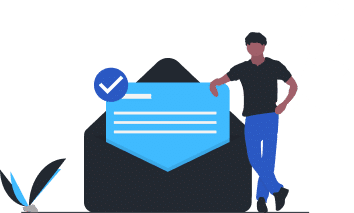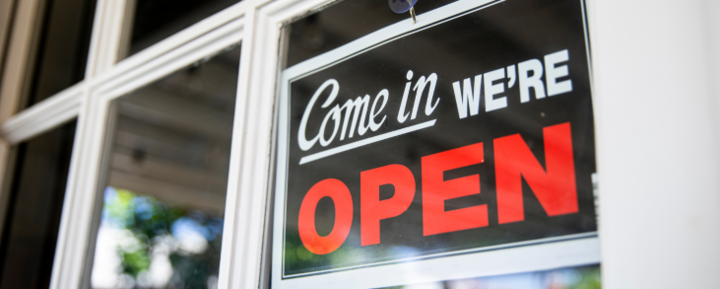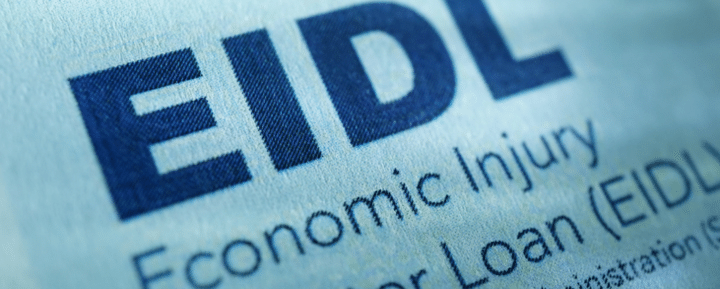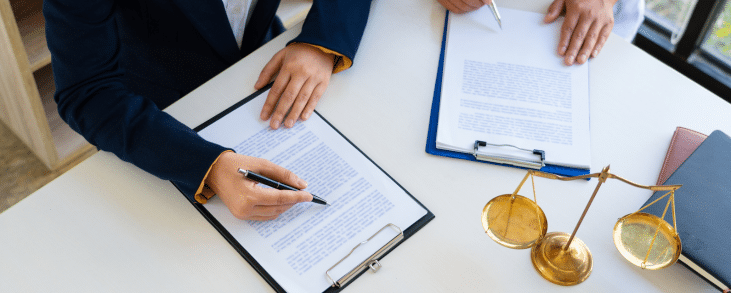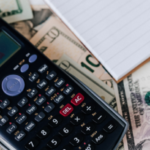Introduction to SBA EIDL Default
Small Business Administration Economic Injury Disaster Loans (EIDLs) provide relief for small businesses, agricultural cooperatives, and private nonprofit organizations located in declared disaster zones. They are also available to businesses affected by the COVID-19 pandemic.
Unfortunately, these loans also come with some risks. After all, they’re only available to small businesses that have been unable to get credit elsewhere, meaning those that may already have an increased chance of defaulting.
If you’ve defaulted on your SBA EIDL or are at risk of doing so, there could be serious consequences. It’s important to understand the potential outcomes and your best next steps to protect your business and personal finances.
Causes of EIDL Loan Default
Each business’s finances are unique, but there are a few common reasons why one might go into default on their EIDL. Some are preventable, while others are, unfortunately, less so.
Economic Factors
It’s quite possible for external economic factors to impact a business’s revenue and, therefore, its ability to repay its loans. Imagine the country goes into a recession, and you’re in an industry like real estate or hospitality that tends to be quite sensitive to economic fluctuations. Due to factors entirely outside of your control, you may no longer have the necessary cash flow to repay your debts, including your EIDL.
Business-Related Challenges
There are also plenty of business-related challenges that could cause you to go into default on your loan. Perhaps your business revenue has taken a hit, or financial emergencies elsewhere in the business have eaten into the funds you would otherwise be using to repay your EIDL. Unfortunately, these business-related challenges aren’t always foreseeable.
Mismanagement of Loan Funds
Finally, you may find yourself defaulting on your EIDL because of a mismanagement of the loan funds. The good news is this cause is preventable — you can avoid default by properly managing your loan funds. It’s critical that when you get an SBA EIDL, you have a plan in place to manage the funds to avoid default.
Managing and Resolving SBA EIDL Default
If you’ve defaulted on your SBA EIDL or are at risk of doing so, it’s important to act quickly to minimize the damage. The first thing you should do is assess your business’s financial situation. Take note of every dollar flowing in and out of the business to determine what’s available to allocate toward loan repayment. Take stock of any savings set aside that you could use to get your business out of default.
Ultimately, you want a clear picture of what’s going on, including how much money you realistically have available each money to put toward your EIDL (even if it’s not the full minimum payment — there may be ways to adjust your payments based on what’s achievable for you right now).
Your next step should be to communicate with the SBA or loan servicer. Be proactive about letting them know if you’re struggling to make your payments. They may be willing to work with you or help minimize some of the negative consequences of default. However, they can’t help you if you don’t ask.
If you haven’t gone into default yet but are concerned it may be a possibility, read here to learn what happens if you can’t repay your SBA EIDL.
Exploring Loan Options
If you’ve gone into default on your loan, there are still options available to help you dig out of your current hole. Loan forgiveness isn’t available for COVID-19 EIDLs, but there are other avenues to consider.
Loan Deferment
Because of the ongoing negative effects of the COVID-19 pandemic, the SBA has allowed for a 30-month deferment period for COVID-19 EIDL borrowers. You may be eligible if your loan was approved in 2020, 2021, or 2022. However, interest will continue to accrue on your loan even while it’s in deferment.
It’s important to note that this deferment option doesn’t apply if your EIDL isn’t related to COVID-19. In that case, you’ll have to explore other relief options.
Hardship Accommodation Plan
The SBA offers a Hardship Accommodation Plan (HAP) for COVID-19 EIDL borrowers who experience short-term financial hardships. If you qualify, you could pay as little as 10% of your normal monthly payments for a period of six months. You can use this program if your loan is in default as long as it hasn’t been sent to the Treasury Department for collection (which typically happens at 180 days past due).
You can enroll in the HAP multiple times, but your payments will increase. Here’s how much you’ll pay:
- 1st enrollment: 10% of monthly payment
- 2nd enrollment: 10% of monthly payment
- 3rd enrollment: 50% of monthly payment
- 4th enrollment: 75% of monthly payment
- 5th enrollment: 75% of monthly payment
Keep in mind that even if you’re only paying 10% of your normal loan payment, your interest will accrue at the normal rate. As a result, you could end up with a balloon payment at the end of the loan.
Treasury Repayment Plan
If your defaulted loan has already been sent to the Department of the Treasury for collection, you won’t be eligible for the HAP through the SBA. However, you may still have options.
If you’re unable to make your normal payments, the Department of the Treasury may allow you to enter into an installment agreement. To find out if you’re eligible, call Centralized Receivables Service within the Bureau of the Fiscal Service in the U.S. Treasury Department.
Submitting an Offer in Compromise
The SBA’s Offer in Compromise program is a way of negotiating a settlement of your EIDL, meaning you could pay less than you actually owe.
To make an Offer in Compromise, you must complete an SBA form and make a settlement offer for the amount you’re able to pay. You’ll also be able to provide facts and reasons for why you can’t repay the full loan amount and why the SBA should accept your offer.
An Offer in Compromise isn’t a guarantee, and you shouldn’t assume your loan is settled just because you’ve submitted the application. You’ll have to wait until you receive written acceptance from the SBA before you can proceed with the settlement.
Financial Counseling
The SBA offers free or affordable financial counseling for small businesses through its partner organizations. These partners can review your business plan, help you access additional capital, and find opportunities in your business to free up the funds to repay your loan. You can find financial counseling opportunities by contacting your local SBA District Office.
Filing For Bankruptcy
In dire circumstances, bankruptcy could be the best option to relieve your EIDL debt, along with any other debt you have. Whether EIDL debt can be discharged in bankruptcy — and how much of it can be discharged — depends on the type of bankruptcy you pursue and your unique debt and income circumstances.
If you opt for Chapter 7 bankruptcy, your EIDL debt may be discharged altogether. If you opt for Chapter 13 or Chapter 11 bankruptcy, you may be put on a payment plan to repay a portion of your debt while the remainder of it will be discharged.
Consequences of Defaulting on SBA EIDL
Defaulting on your SBA EIDL could lead to a series of negative consequences. The first impact you’re likely to see is a lower credit score. Your lender will report your missed payments to the credit bureaus, and your credit score could take a major hit. Unfortunately, this will make it more difficult to access credit — especially affordable credit — later on.
Many EIDLs require a personal guarantee, so your personal finances and credit aren’t necessarily protected just because it was your business that took out the loan.
If you don’t get out of default, your lender could take legal action to recover the funds. For SBA loans, this typically first involves turning the loan over to the Department of Treasury for collection. If you don’t make payments to the Treasury, you could face garnished wages or tax refunds, levies against your bank accounts, or even asset seizure.
While EIDL loans are sometimes unsecured, the federal government has effective mechanisms in place to collect unpaid debt, so don’t assume the issue will simply go away if you stop paying.
Keep in mind that you’ll be expected to repay your loan even if you’ve gone out of business.
Strategies to Avoid Default
If you’re struggling to make your loan payments, it’s important to take steps to avoid defaulting on your loan. And if you’re already in default, use these same strategies to help you get out of it.
In most cases, adequate financial planning, budgeting, and recordkeeping are your best option. Know how much money is coming in and going out each month, and look for areas in your budget where you could free up room for your debt repayment. The more thorough and accurate your financial plan and records, the more likely you’ll be able to weather the financial storm your business is facing.
If you can’t resolve the situation yourself, consider seeking professional financial advice, especially if you don’t already have a financial professional in your company. The right professional may be able to find opportunities you’re missing. However, this will cost you additional money your business may not have.
Legal Considerations and Rights
A business loan, including an EIDL, is a legal agreement between you and your lender. Because of that, it’s important to treat your loan repayment seriously as you would any other legal issue. Here are some things to keep in mind.
Understanding Your Loan Agreement
First of all, make sure you’ve thoroughly read and understand your loan agreement. It’s important to know exactly what’s required of you and what steps will be taken if you don’t hold up your end of the agreement. Pay attention to important figures, such as your loan amount and interest rate, as well as your repayment term and other important information.
Legal Resources and Support
If you’re struggling with your EIDL or have gone into default, you may want to consider hiring a legal professional to guide you. Many debt relief attorneys have experience helping small business owners with their defaulted EIDLs.
A debt help attorney can help you with everything from offering legal advice to writing up your Offer in Compromise to negotiating with the Department of the Treasury for an adjusted payment plan to helping you file for bankruptcy.
If you’re struggling with repayment of your EIDL, Tayne Law Group may be able to help. We have a team of experienced debt professionals prepared to help you on your debt relief journey. Call us at (866) 890-7337 or fill out our short contact form to schedule a free phone consultation. We never share or sell your information, and all conversations are confidential.


